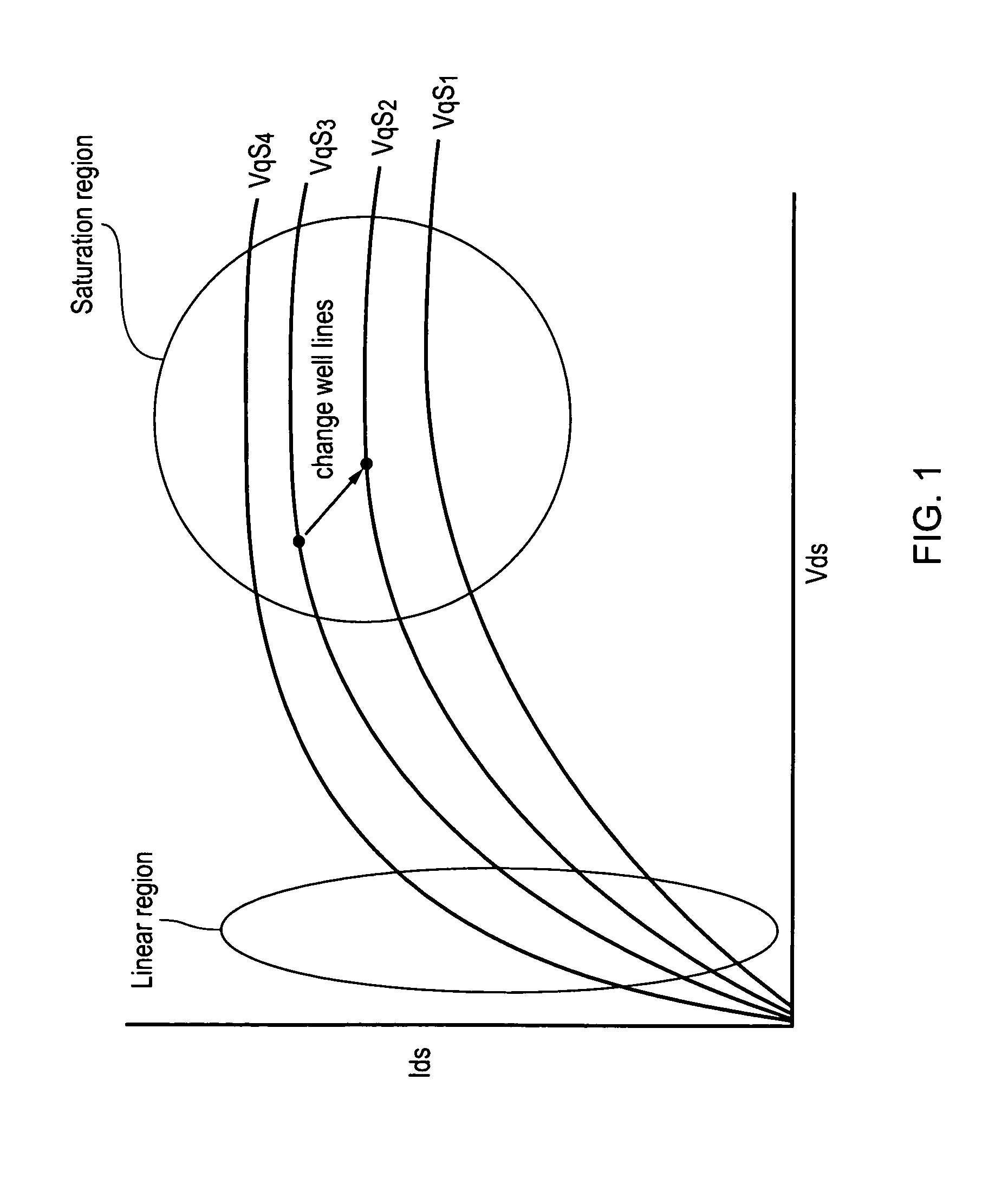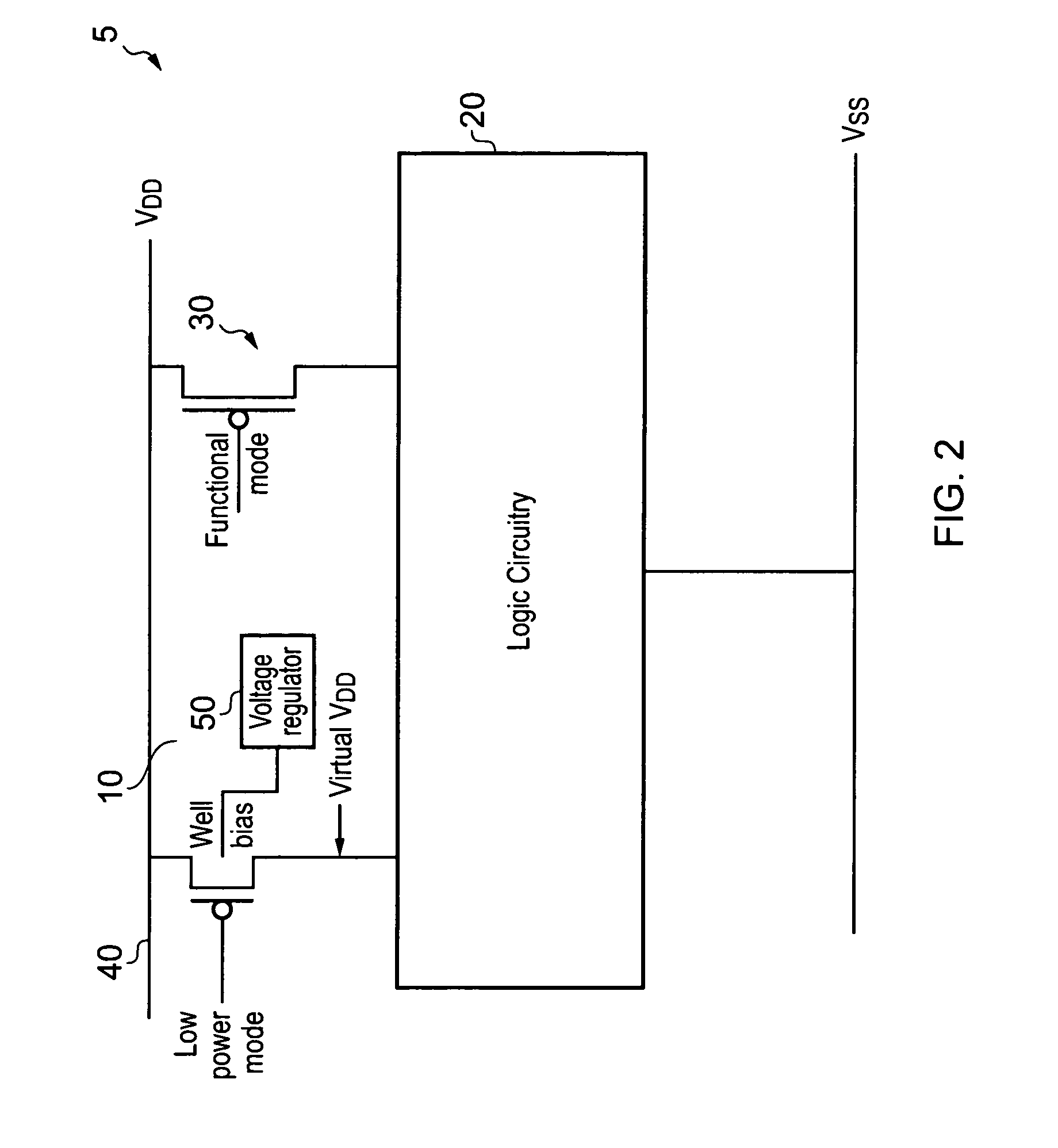Voltage regulation of a virtual power rail
a virtual power rail and voltage regulation technology, applied in the field of logic circuitry, can solve the problems of data loss risk and increased wake up times, and achieve the effects of reducing voltage levels, reducing power loss, and increasing wake up times
- Summary
- Abstract
- Description
- Claims
- Application Information
AI Technical Summary
Benefits of technology
Problems solved by technology
Method used
Image
Examples
Embodiment Construction
[0051]FIG. 1 shows a graph illustrating how the current through a transistor varies with the voltage across it at different gate voltages. As can be seen when a transistor is in conducting mode, it operates at first in a linear region where an increase in voltage across the transistor produces a corresponding increase in current. At a certain point it reaches a saturation mode, where it cannot conduct any more current and thus, as the voltage across the transistor changes it continues to output approximately the same current. In this regard although the current is almost constant there is a slight slope which is referred to as channel length modulation, however, it is negligible when compared to the rate of change of current when operating in the linear region. This saturation current varies with Vgs which is the voltage level at the source Vs minus the voltage level at the gate Vg minus the threshold voltage Vth of the transistor. Thus, changing the threshold voltage of the transis...
PUM
 Login to View More
Login to View More Abstract
Description
Claims
Application Information
 Login to View More
Login to View More - R&D
- Intellectual Property
- Life Sciences
- Materials
- Tech Scout
- Unparalleled Data Quality
- Higher Quality Content
- 60% Fewer Hallucinations
Browse by: Latest US Patents, China's latest patents, Technical Efficacy Thesaurus, Application Domain, Technology Topic, Popular Technical Reports.
© 2025 PatSnap. All rights reserved.Legal|Privacy policy|Modern Slavery Act Transparency Statement|Sitemap|About US| Contact US: help@patsnap.com



